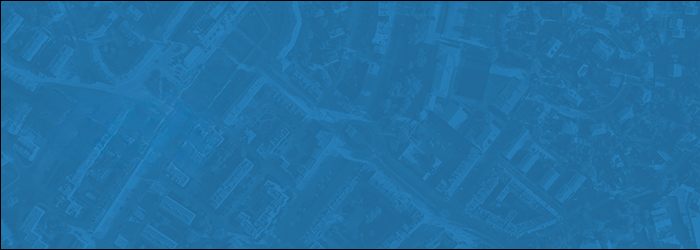Free Lunch for PSAPs?
These have been exciting times for us at Intrado with respect to our PSAP facing offerings. In June we announced VIPER NextGen, our cloud native call...
3 min read
By Intrado
Jun 9, 2022
Stop us if any of these scenarios sound familiar:
If you’re experiencing some or all of these issues at your PSAP or agency, you’re not alone. The good news is that there’s real help for these situations: Emergency Call Track System (ECaTS), the market leader for reporting 911 data, has added a new feature that allows Public Safety Answering Points (PSAPs) to visualize the location of events in ways that can dramatically improve decision-making and planning.
The Ad Hoc Mapping tool, a new, no-cost add-on to ECaTs, aggregates call data and converts it into a map that provides valuable data visualization of location. Take the example of a building on fire: Typically, multiple 911 calls come in related to an event like this. But it’s often not easy for PSAP staff to see where each call is coming from. With Ad Hoc Mapping, after the event you can perform an incident review and see each call plotted on a map over time, giving you and your team more insight into what happened—and especially how to better deploy resources and plan for future incidents.
The new solution works across larger geographical areas, too. Consider the Marshall, Colorado fire that began in December 2021, says Justin McLeod, ECaTS product manager. “Imagine being able to see each 911 call plotted on the map and the type of information that provides to help you understand how to respond and determine where the fire originated based on when the first calls came in. This visual information can be crucial in helping you to deploy your resources appropriately.” Like ECaTs, the new tool works with the majority of call-handing and customer premises equipment (CPE).
Creating a visual representation of a specific call pattern following an event typically requires sifting through an enormous amount of data, then manually plotting each point. “First, you have to get the data,” McLeod explains. “Then you have to pull a query to get the specific call data you need. Then download it into an Excel spreadsheet and then load and plot specific calls, one by one by one. After all that effort, you might get close to what you can get with the tool.”
Bexar Metro 911 in San Antonio, Texas, is using the newest addition to ECaTs to answer questions like why a call was transferred between PSAPs; what caused a cell tower location change; why unintended emergency service number (ESN) changes were made; and why incorrect PSAPs are designated in the wiring routing database.
“I have tried to answer many of these questions for years by plotting calls and making corrections where applicable,” says Cory Branchburg of Bexar Metro. “The Ad Hoc Mapping tool helps the lay person without a mapping background find out call distribution for a particular PSAP and time period. The product eliminates the need for me to manually plot myself and is easy to use.”
The fact that this self-service tool doesn’t require an extensive background in GIS (geographic information systems) is significant. “The Ad Hoc Mapping feature helps visualize what areas of the city are generating the calls,” says Ron Hein of the Albany Police Department, in California. “Now that California agencies are online with third-party cloud-based systems, the dispatchers are getting mapping data immediately to guide our first responders to the location where they are needed.”
“Unfortunately, we have some individuals in Memphis who constantly call 911 and abuse our call-takers,” says Michael Spencer of the Shelby Police Department, in Tennessee. “One of them called hundreds of times in one month. Using the mapping feature allowed us to see that the subject likely works about a mile from his home and even helped us determine his schedule. Knowing this helps officers know where they can find him.”
“Without the Ad Hoc Mapping tool, it would be so much harder to resolve this situation,” agrees Raymond Chiozza, who also works in Shelby. “You can see this individual when they make the 911 call and then open the Google Street View on another browser, see the businesses around the location, and easily put two and two together that the individual is probably getting off work.”
As the pandemic appears to wane and life starts to normalize, we can expect to see more outdoor events like concerts and parades. “The Ad Hoc Mapping tool can visually show what parts of the route or venue had calls and where they came from,” McLeod explains. “Using the tool, users can run reports and determine the type and exact location of each call. This can be invaluable information when planning for the next event.”
Developed and released in 2022, the uses for the Ad Hoc Mapping tool are still emerging. One case in point: The Shelby PD was able to provide critical information about a 911 call to the Tennessee Bureau of Investigation (TBI)—information the bureau couldn’t easily obtain otherwise.
“A TBI agent sent me a subpoena for records on the call,” recalls Chiozza. “I emailed him the information from the Ad Hoc Mapping tool and advised that he would have to contact two PSAPs for the audio recording because the call was routed to two PSAPs. He responded, ‘I had no idea you had that capability. I’ve been in this business for 22 years and cannot believe how far technology has come.’”
To learn more about how ECaTs and the Ad Hoc Mapping tool can help your PSAPs and agency, visit ecats911.com.

These have been exciting times for us at Intrado with respect to our PSAP facing offerings. In June we announced VIPER NextGen, our cloud native call...

Details matter when you’re responsible for monitoring and managing the “big picture” view of your Emergency Services IP Network (ESInet) across...

This year, APCO 2024 was in sunny Orlando, marking the second time in the city for many public safety professionals, as NENA was just down the street...

Actionable Intelligence for Next Generation 911 Wireless Routing Analysis (WRA) is a groundbreaking way to tie disparate data points together. WRA...